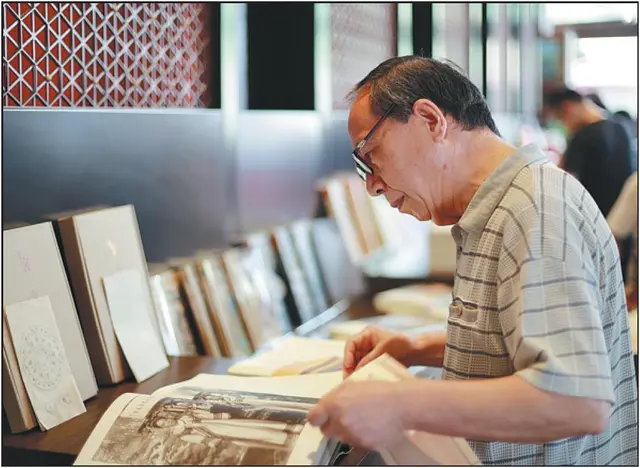A visitor flips through a book on the history of the Qing Dynasty (1644-1911) at the site. [Photo by Deng Rui/China Daily]
A set of warehouses in Chongqing on the southern bank of Yangtze River is 130 years old. In spite of its plain appearance, this former site of Anderson Firm, a Swedish trading house built in 1891, witnessed a gathering of precious cultural relics in the 1930s.
The compound of 2,500 square meters has a memorial hall that opened to the public on Friday on the eve of China's Cultural and Natural Heritage Day. Left unused for long, the house finally embraced its new life after a renovation from 2018 to 2020.
"This place once made a great contribution to protect our national treasures and inherit the lineage of Chinese civilization," says Xing Jun, deputy director of Chongqing Cultural Heritage Administration.
In 1933, when the War of Resistance Against Japanese Aggression (1931-45) was approaching Beijing, administrators of the Palace Museum decided to move key cultural relics housed there southward in case they fell into invaders' hands.
The museum, China's imperial palace from 1420 to 1911, also known as the Forbidden City, is home to myriad national treasures.
The salvage campaign saw 13,492 boxes of cultural relics, including artifacts from the Summer Palace and Guozijian (the former imperial academy), embark on a journey to safety.
The relocation work lasted for a few years and the artifacts arrived in cities, including Shanghai and Nanjing in today's Jiangsu province.
However, when the war zone expanded to East China in 1937, they had to be shipped westward again along three routes. Consequently, 9,331 boxes of the cultural relics arrived in Chongqing that year through the middle route. They were secretly stored in three locations in the city, among which 3,694 boxes were put in four warehouses of Anderson Firm, according to Yan Hongbin, deputy director of the Palace Museum.
 简体中文
简体中文




